Waxing is a popular method of hair removal that leaves the skin smooth and hair-free for weeks. However, it can also cause irritation, redness, and even lifted skin in some cases. This may happen for various reasons, such as incorrect waxing techniques, using harsh products, or having sensitive skin.
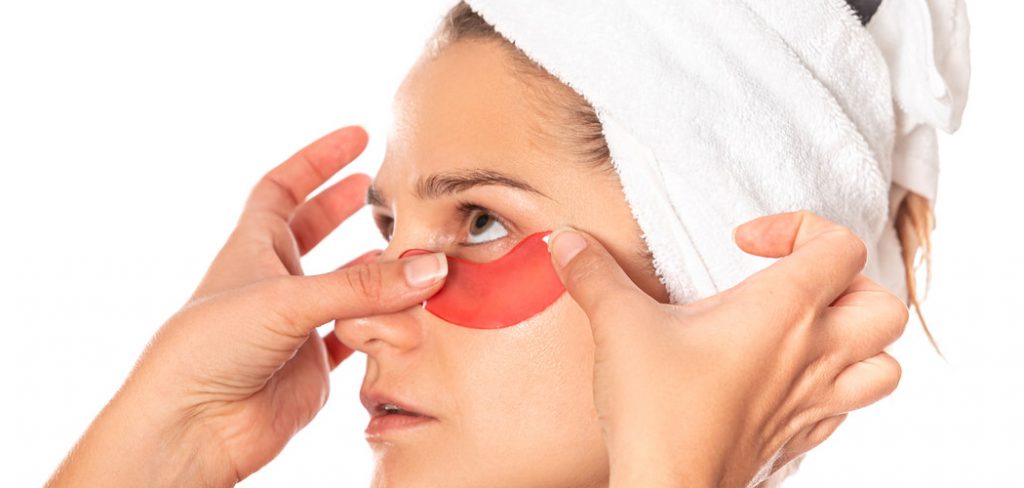
If you are experiencing lifted skin from waxing, there are a few things you can do to treat it and soothe the affected area. In this guide, we will discuss some effective ways on how to treat lifted skin from waxing. So, let’s dive in!
Understanding Lifted Skin from Waxing:
The process of waxing involves applying hot or cold wax to the skin and then pulling it off in the opposite direction of hair growth. This action removes both the hair and a thin layer of dead skin cells, leaving behind a smooth surface.
When done correctly, waxing can be an efficient and safe method of hair removal. However, if not done properly or using low-quality products, the skin can react negatively and become lifted. This means that the top layer of skin has been pulled off along with the hair, leaving an open wound.
11 Best Ways on How to Treat Lifted Skin From Waxing:
1. Cleanse and Disinfect the Affected Area:
The first step in treating lifted skin from waxing is thoroughly cleaning the affected area. Use a gentle cleanser or water to remove any dirt, debris, or leftover wax residue on the skin. Then, disinfect with an antiseptic solution to prevent infection. If the affected area is small, you can use rubbing alcohol or hydrogen peroxide. This will also help to soothe the skin and reduce inflammation.

2. Apply Aloe Vera Gel:
Aloe vera gel is known for its healing properties and can effectively treat lifted skin from waxing. It has anti-inflammatory and cooling effects that can soothe irritation and promote healing. Apply a thin layer of pure aloe vera gel on the affected area and let it dry. Repeat this 2-3 times a day until the skin has healed. While purchasing aloe vera gel, ensure it is 100% pure and contains no added fragrances or chemicals that may further irritate the skin.
3. Use a Cold Compress:
A cold compress can help to reduce swelling and soothe the irritation caused by lifted skin from waxing. You can use an ice pack, a bag of frozen peas, or even a cold, damp cloth to make a compress. Apply it to the affected area for 10-15 minutes at a time. This will also help numb the area and relieve any pain or discomfort. A cold compress can be especially beneficial if the lifted skin is red or inflamed.
4. Avoid Harsh Products:
After experiencing lifted skin from waxing, it is important to avoid using any harsh products on the affected area until it has fully healed. This includes scrubs, exfoliants, and even some types of lotions or creams that may contain irritating ingredients. Stick to gentle, non-irritating products, or let the skin heal on its own. This will prevent further irritation and allow the skin to heal faster.
5. Keep the Area Moisturized:
While it is important to avoid harsh products, keeping the affected area moisturized can help with healing. Use a gentle, non-irritating lotion or cream to keep the skin hydrated and prevent it from drying out. This will also help reduce any itching or discomfort the lifted skin may cause. This step is crucial once the skin has started to heal, as dryness can cause scabs and prolong the healing process.
6. Use Honey:
Honey is a natural antibacterial agent that can help prevent infection and promote healing in lifted skin from waxing. It also has moisturizing properties that will keep the area hydrated. Apply a thin layer of honey on the affected area and let it sit for 10-15 minutes before rinsing off with warm water. Repeat this 2-3 times a day until the skin has healed. Using raw, organic honey is recommended for the best results.

7. Take an Antihistamine:
If the lifted skin is accompanied by severe itching or redness, taking an antihistamine can help reduce these symptoms. It will also help prevent scratching, which can further irritate the skin and delay healing. Consult with your doctor before taking any medication, especially if you are allergic to any of the ingredients in the antihistamine.
8. Avoid Touching or Picking at the Affected Area:
It can be tempting to touch or pick at lifted skin, but this should be avoided at all costs. Touching or picking can introduce bacteria and germs to the open wound, increasing the risk of infection. It can also cause scarring or prolong the healing process. Keep your hands off the affected area and let it heal on its own. This will help to prevent any further complications.
9. Apply Vitamin E Oil:
Vitamin E oil is known for its skin-healing properties and can effectively treat lifted skin from waxing. It is also a natural moisturizer, which can help keep the affected area hydrated and prevent scabs from forming. Gently apply a small amount of vitamin E oil to the affected area and massage it in. Repeat this 2-3 times a day until the skin has fully healed.
10. Consult with a Dermatologist:
If the lifted skin from waxing does not show signs of improvement or becomes infected, it is important to consult with a dermatologist. They can evaluate the severity of the injury and provide medical treatment if necessary. They can also advise on how to take care of the affected area and prevent future complications.
11. Be Gentle with the Skin:
Finally, it is important to be gentle with the skin while it is healing. Avoid activities that may irritate or further injure the affected area, such as swimming or excessive sweating. Also, avoid wearing tight clothing that may rub against the skin. Allow the skin to heal in a clean, dry environment, and be patient with the healing process. This will help to ensure that the skin heals properly and minimize any scarring.
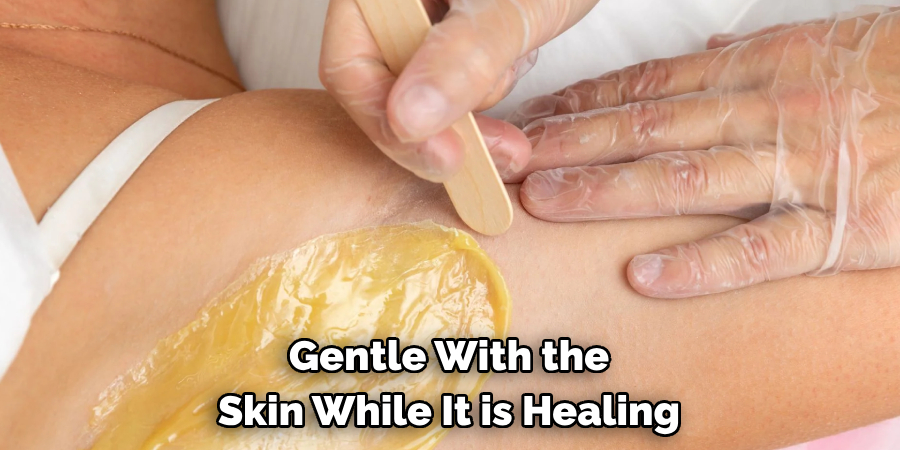
Following these tips will help treat and heal lifted skin effectively from waxing. Remember to always take precautions before waxing, such as making sure the skin is clean and dry, using a proper technique, and using the right products for your skin type. With proper care, you can prevent lifted skin from occurring in the first place. So, be gentle with your skin and take good care of it; it will thank you in the long run. Happy waxing!
Additional Tips and Tricks to Treat Lifted Skin From Waxing
1. If you experience redness or irritation after waxing, apply a cold compress to the area. This will help reduce inflammation and soothe the skin. You can also apply aloe vera gel or a mild moisturizer to further calm the skin.
2. Exfoliate regularly to prevent ingrown hairs. Use a gentle exfoliating scrub or loofah to remove dead skin cells and unclog pores, allowing hair to grow properly without becoming trapped under the surface.
3. Avoid hot showers or baths immediately after waxing, as the heat can further irritate the skin. Stick to lukewarm water and avoid using harsh soaps or scrubs on the waxed area.
4. Opt for natural or hypoallergenic waxing products to minimize potential reactions and irritation. These types of waxes are typically made with gentler ingredients that are less likely to cause adverse effects on the skin.
5. If you have sensitive skin, consider using a numbing cream or spray before waxing to reduce discomfort and pain. Be sure to follow the instructions carefully and test the product on a small area of skin before applying it to a larger area.
6. Moisturize regularly after waxing to keep the skin hydrated and prevent dryness or flakiness. Look for moisturizers that are specifically designed for post-waxing use.
7. Avoid touching or picking at the waxed area to prevent infection and irritation. Keep the area clean and dry to promote healing.
8. If you have a history of allergic reactions or skin sensitivities, consult a dermatologist before trying new hair removal methods. They can recommend safe alternatives or provide helpful tips for managing potential reactions.
9. If you’re prone to ingrown hairs, try using a warm compress or exfoliating brush before waxing to open up pores and release trapped hairs. After waxing, apply an ingrown hair serum or cream to smooth out any bumps and prevent future occurrences.
10. Lastly, give your skin some time to heal between waxing sessions. Over-waxing can cause excessive irritation and damage to the skin, so try to limit waxing to once every 4-6 weeks as needed.
Following these additional tips and tricks can help you achieve smooth, lifted skin after waxing without any negative side effects. Always listen to your skin and adjust your routine for the best results. Happy waxing!
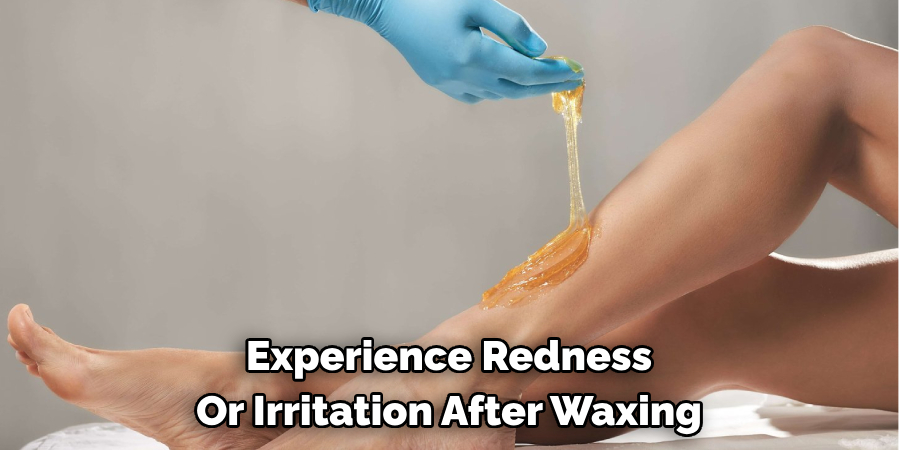
Preventative Measures to Avoid Lifted Skin
1. Protect Your Skin From Sunlight:
Exposure to UV rays can damage your skin’s collagen and elastin fibers, leading to premature aging and lifting. Always wear sunscreen with at least SPF 30 and try to limit your time in direct sunlight.
In addition to sunscreen, wearing protective clothing such as hats and long-sleeved shirts can also help shield your skin from the sun’s harmful rays.
2. Quit Smoking:
Smoking harms your overall health and damages the collagen and elastin fibers in your skin, causing it to lose its elasticity and lift. Quitting smoking can not only help prevent lifted skin but also improve the overall appearance of your skin. This includes reducing fine lines and wrinkles and improving skin texture. If you need help quitting smoking, don’t hesitate to reach out to your healthcare provider for resources and support.
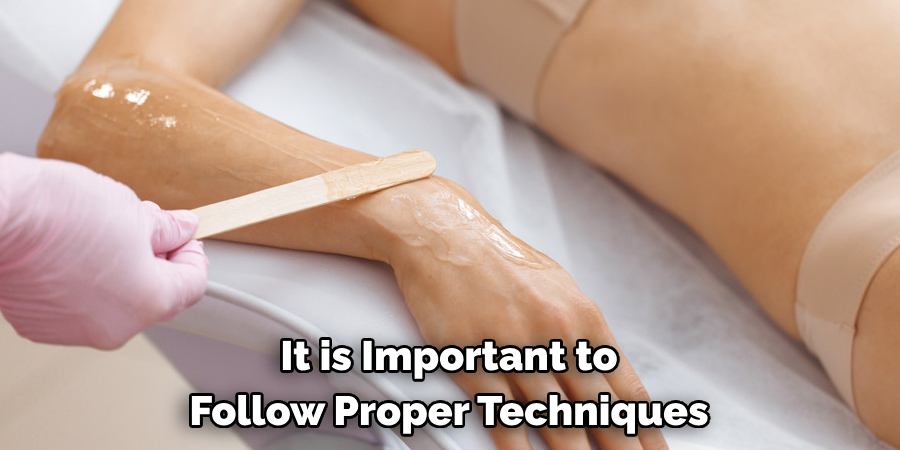
3. Use Gentle Cleansers:
Harsh cleansers can strip your skin of its natural oils, leading to dryness and irritation. This can weaken the skin’s barrier and make it more susceptible to lifting. Instead, opt for gentle cleansers that are suitable for your skin type. Look for ingredients like hyaluronic acid and glycerin, which can help hydrate and nourish the skin. Avoid cleansers with fragrances and harsh chemicals, as they can also be irritating to the skin.
4. Moisturize Daily:
Keeping your skin hydrated is important for maintaining its elasticity and preventing lifted skin. Make sure to moisturize your face and body daily with a lotion or cream suitable for your skin type. You can also use serums or oils for added hydration, especially in drier climates or during colder months. This will help keep your skin smooth and supple, reducing the chances of it lifting.
5. Maintain a Healthy Diet:
Eating a balanced diet with plenty of fruits, vegetables, and healthy fats can provide your skin with essential nutrients to keep it healthy and prevent lifted skin. Foods high in antioxidants, such as berries and leafy greens, can also protect your skin from free radical damage and premature aging. Avoiding processed and sugary foods can also help maintain the skin’s elasticity.
6. Get Enough Sleep:
Lack of sleep can wreak havoc on your skin, leading to dullness, dryness, and even lifted skin. When we sleep, our bodies produce collagen to repair and rejuvenate the skin. Getting enough quality sleep (7-9 hours for adults) can help maintain the skin’s elasticity and prevent premature aging. Establishing a healthy sleep routine, such as avoiding screens before bedtime and keeping a consistent bedtime, can also benefit your overall skin health.
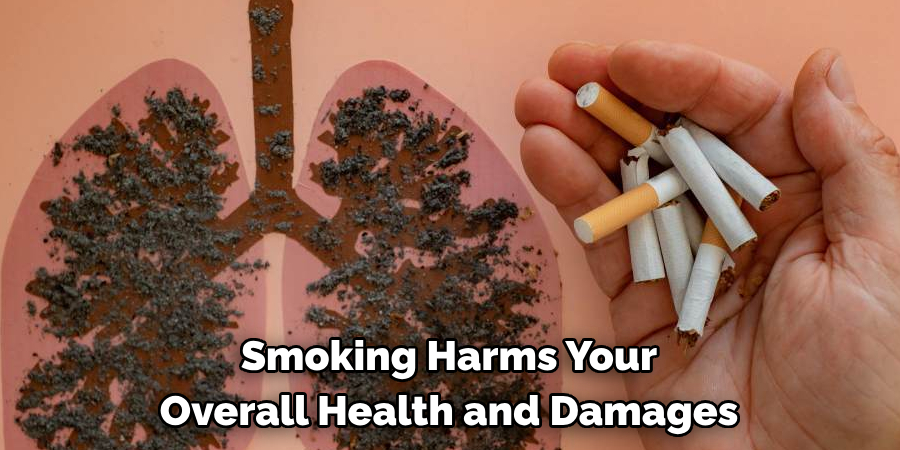
7. Avoid Excessive Tugging and Pulling:
Constantly pulling or tugging at your skin, whether it’s from rubbing your eyes, wearing tight hairstyles, or using harsh exfoliants, can lead to lifted skin over time. Be mindful of how you handle and care for your skin, and try to avoid excessive pulling or tugging motions. When applying skincare products or makeup, use gentle patting or tapping motions instead of rubbing.
8. Stay Hydrated:
Drinking enough water is crucial for maintaining skin health and preventing lifted skin. When dehydrated, our skin can become dry, tight, and lose elasticity. Aim to drink at least eight glasses of water a day, and try to limit your intake of dehydrating beverages like alcohol and caffeine. This will help keep your skin hydrated from the inside out and prevent it from becoming dry and lifting.
9. Use Anti-Aging Products:
In addition to following a healthy skincare routine, anti-aging products can help prevent lifted skin. Look for products with ingredients like retinol, vitamin C, and peptides, which can help stimulate collagen production and improve skin elasticity. Consult with a dermatologist to determine the best anti-aging products for your skin type and concerns.
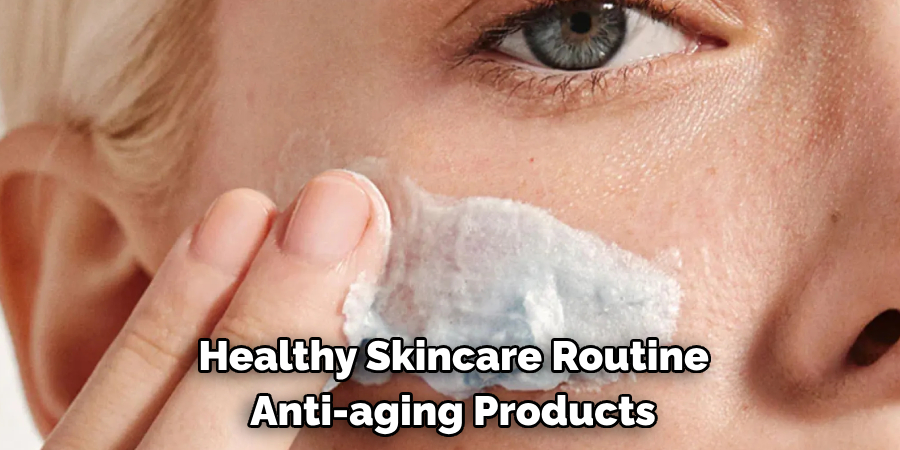
10. Stay Consistent With Your Skincare Routine:
Consistency is key to preventing lifted skin. Follow a regular skincare routine, including cleansing, moisturizing, and using any additional treatments or products recommended by your dermatologist. Skipping steps or products can disrupt the skin’s balance and lead to lifted skin over time. Stick to your routine and give your skin the care it needs to stay healthy and firm.
Following these preventative measures can help keep your skin looking youthful and lifted. By protecting your skin from the sun, quitting smoking, using gentle cleansers and moisturizers, maintaining a healthy lifestyle, and being consistent with your skincare routine, you can minimize the risk of lifted skin and maintain healthy, glowing skin for years to come. Remember to also consult with a dermatologist for personalized advice and recommendations for your skin concerns. So, make sure to take care of your skin today to prevent lifted skin tomorrow!
Frequently Asked Questions
What Causes Lifted Skin From Waxing?
Lifted skin from waxing is typically caused by improper technique or sensitivity to the wax. If the wax is too hot, it can burn and lift the top layer of skin. Similarly, if the wax is applied too thickly or removed in the wrong direction, it can lift the skin. Some individuals may also have a sensitivity or allergy to the ingredients in the wax, leading to an adverse reaction and lifted skin. In some cases, pre-existing skin conditions such as eczema or psoriasis may also increase the risk of lifted skin from waxing.
How Can I Prevent Lifted Skin From Waxing in the Future?
To prevent lifted skin from waxing, it is important to follow proper techniques and choose a high-quality wax that is suitable for your skin type. Make sure to test the temperature of the wax before applying it to a larger area, and always remove the wax in the direction of hair growth. Exfoliating the skin before waxing is also recommended to help reduce the risk of ingrown hairs, which can contribute to lifted skin. If you have a known sensitivity or allergy to certain ingredients, avoid waxes containing them. Additionally, if you have a pre-existing skin condition, consult with a professional before waxing to determine the best course of action.
What Should I Do If My Skin is Lifted From Waxing?
If your skin becomes lifted from waxing, it is important to properly care for the affected area to prevent infection and promote healing. First, clean the area gently with mild soap and water. Then, apply a soothing and hydrating product such as aloe vera gel or a moisturizing lotion. Avoid touching or picking at the lifted skin, as this can worsen the area and increase the risk of infection. If the pain is severe or if there are any signs of infection (redness, swelling, pus), seek medical attention. In most cases, the lifted skin will heal within a week or two without any complications.
Is There Anything I Can Do to Speed Up Healing?
While giving your skin time to heal naturally is important, there are some things you can do to promote faster healing. First and foremost, keep the affected area clean and moisturized. Try using products with soothing ingredients like chamomile or lavender. You can also apply a cool compress to reduce inflammation and discomfort. Avoid using harsh products or touching the area excessively, as this can slow the healing process.
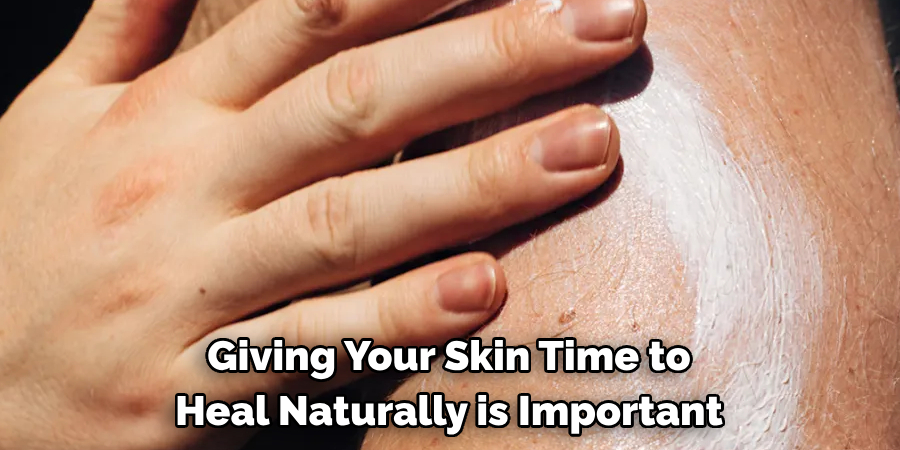
Conclusion
Knowing how to treat lifted skin from waxing can help you avoid this common and often uncomfortable issue. By following proper techniques, using suitable products, and caring for your skin after waxing, you can minimize the risk of lifted skin and enjoy smooth, hair-free results. If you experience lifted skin from waxing, treat it gently and seek medical attention if necessary.
Your skin will heal with patience and proper care, and be ready for your next waxing session. So go ahead, get that silky smooth skin you desire! Remember to always take proper precautions when treating lifted skin from waxing, but don’t let it stop you from enjoying the benefits of this popular hair removal method. Happy waxing!
About the Author
Jane Hubbard is a passionate beauty expert with a wealth of experience in makeup, hair, and overall beauty techniques. After years of working as a hairdresser specialist, she followed her entrepreneurial spirit and started her own consultancy business.
Jane has always been driven by her desire to help others feel confident in their own skin, and she does this by sharing her knowledge, experiences, and practical beauty tips. Through her consultancy, she empowers individuals to embrace their unique beauty, offering tailored guidance that boosts both self-esteem and personal style.
Professional Focus
- Specializes in makeup, hairstyling, and beauty consulting.
- Provides personalized beauty advice, tips, and techniques to help individuals feel confident in their appearance.
- Dedicated to staying up-to-date with the latest industry trends and developments.
- Passionate about creating a comfortable and empowering experience for every client.
Education History
- University of Craft and Design – Bachelor of Fine Arts (BFA) in Woodworking and Furniture Design
- Woodworking Apprenticeships – Extensive hands-on training with skilled craftsmen to refine carpentry and furniture making techniques
- Online Courses & Masterclasses – Continued education in advanced woodworking techniques, design principles, and specialized tools
Expertise:
- Makeup artistry, hairstyling, and beauty consulting.
- Personalized beauty techniques to enhance confidence and self-expression.
- Educating clients on how to maintain their beauty routines at home.
